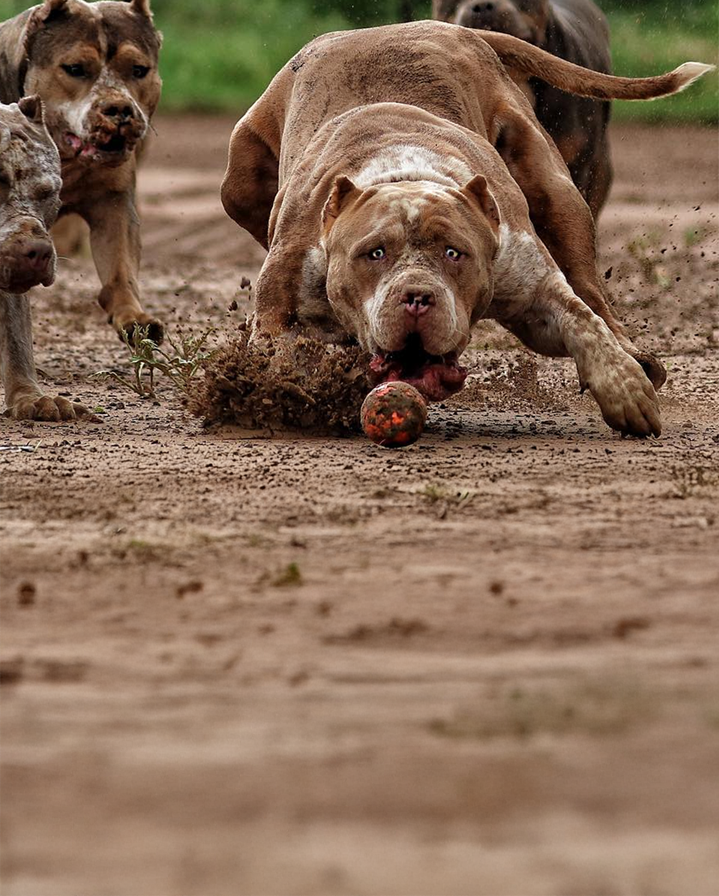5 Myths About Bully Breeds
For the longest time, bully breeds have been feared due to the stereotypical belief that they are inherently dangerous. It is thought by many that these breeds are naturally aggressive because they are selectively bred for their fighting prowess. In the 1980s, the media coverage of dog bite incidents created a myth of bully breed unpredictability when they stopped reporting triggers or events that precipitated the attacks. This has put the bully breeds in an undeserved bad light. Bully breeds often face prejudice and misunderstanding due to misconceptions about their nature and temperament. These dogs are frequently labeled as aggressive or dangerous.
Let’s address some common misconceptions about bully dogs and provide evidence-based information to dispel these myths, helping you better understand the truth about these loyal and affectionate breeds.
1. Myth: “Pitbulls are Aggressive and Dangerous”

One of the most pervasive misconceptions about pitbulls is that they are inherently aggressive and pose a danger to humans. However, this belief is unfounded and not supported by scientific evidence.
Fact: Studies have shown that aggressiveness in dogs is not breed-specific, but rather influenced by various factors such as genetics, upbringing, and socialization. In fact, the American Temperament Test Society, which tests dog breeds’ temperaments, consistently shows that many bully breeds score higher in terms of stability and friendliness than some other popular breeds.

(See the ATTS breed statistics here.)
2. Myth: “Bully Dogs Have Locking Jaws”

Another common myth is that bully breeds have “locking jaws,” meaning that once they bite, their jaws lock into place, making it impossible to release their grip.
Fact: There is no scientific evidence to support the existence of “locking jaws” in any dog breed. Bully breeds, like all dogs, have powerful jaw muscles, but their anatomy does not differ significantly from other breeds in terms of jaw structure or function.
3. Myth: “Bully Breeds Are Unpredictable”

Some people believe that bully breeds are unpredictable and can suddenly become aggressive without warning.
Fact: Like any dog, bully breeds can exhibit aggressive behavior if they feel threatened or provoked, but this is not unique to these breeds. Proper socialization and training from an early age can help ensure that bully breeds become well-adjusted and well-behaved pets.
(Related: Can you take your pit bull to a dog park?)
4. Myth: “Bully Dogs Are Not Good with Children”

There is a misconception that bully breeds are not suitable for families with children due to their perceived aggressiveness.
Fact: Many bully breeds, such as the Boxer and American Staffordshire Terrier, are known for their affectionate, gentle nature and can make excellent family pets. When properly socialized and supervised, bully breeds can form strong bonds with children and become loyal, protective companions.
5. Myth: “Bully Breeds Are Only Suitable for Experienced Dog Owners”

Some people believe that bully breeds are only suitable for experienced dog owners due to their strength and potential for aggression.
Fact: While it is true that bully breeds require consistent training and socialization, they can be perfectly suitable pets for first-time dog owners who are committed to investing the time and effort needed to raise a well-adjusted dog. Many bully breeds are intelligent, eager to please, and highly trainable, making them excellent companions for dedicated owners.
Misconceptions about bully dogs have led to unfair stereotypes and breed-specific legislation in some areas. By understanding the truth about these breeds and sharing evidence-based information, we can help dispel these myths and promote a more accurate, compassionate view of these loyal, affectionate dogs.
Conclusion
Bully breeds have faced a lot of criticism due to the stereotypes they have been linked with over the past decades. The unfair depiction of these breeds has led to disappointing repercussions such as breed bans, increased abandonment rates, and even mass euthanasia. It is important to issue a strong call to action to share the truths highlighted and help affect change.
One of the best things bully breed-owners can do is to become breed ambassadors. It can start with doing everything necessary to be responsible dog owners. This small step can help change the public’s perception about bully breeds and aid the end of this breed discrimination.
Are you a bully breed dog owner? Support this call by leaving us a comment below.










34 comments
I’m have two pit bulls and more 4 tiny dogs and they are so adorable and nice with their littles all my life I’m have bulls and for me is the best breed ever!!! Luv my dogs
There are no bad dogs just bad owners.
My favorite breed are pitbulls I have one myself. these dogs are so amazing, and incredibly smart just like any other dog, they just need a chance and more people to stand up and fight for them and be their voice.
I am a bully owner. I love my fur baby more than some people I know. Her name is Sissy Ann. She’s 7 years old. She is my first pit ever. I hate to admit that I was one of the small minded people who thought they were a bad breed. I could not have been more wrong. I will always have a pit from now on.
Thanks for sticking up for the greatest dog on earth. Loyal, courageous, trustworthy, and loving. I’ve been blessed to share my life with three of my own plus two additional in the family. Won’t be without at least one by my side.